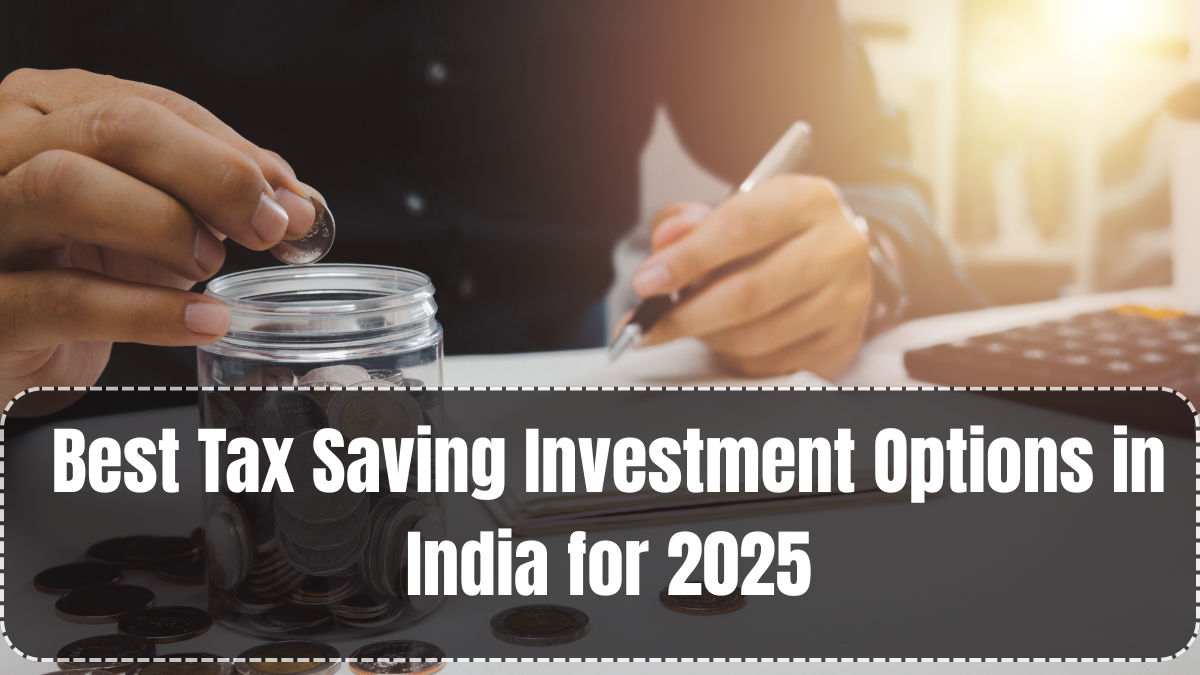Tax planning is no longer just a year-end task — it’s a smart financial habit. The Tax Saving Investment Options available in India for 2025 offer a wide range of instruments to help you reduce your tax liability while growing your wealth. Whether you’re a salaried individual, business owner, or freelancer, selecting the right mix of investments can help you save under sections like 80C, 80D, and more.
This year, several traditional and new-age tax-saving tools have gained popularity due to higher returns, flexible tenures, and dual benefits of safety plus growth. Here’s your comprehensive guide to making the most of every rupee you invest in 2025.

Top Tax Saving Investments Under Section 80C
The most commonly used section for deductions is 80C, which allows up to ₹1.5 lakh of annual exemption. The best Tax Saving Investment Options under this section include:
-
Public Provident Fund (PPF) – Government-backed, 7.1% interest (tax-free)
-
Employees’ Provident Fund (EPF) – For salaried employees; automatic deduction
-
ELSS (Equity Linked Saving Schemes) – Mutual funds with 3-year lock-in and market-linked returns
-
National Savings Certificate (NSC) – Fixed return instrument with 5-year maturity
-
5-Year Bank Fixed Deposits – Offered by public and private sector banks with tax benefit
These options balance safety, liquidity, and tax savings depending on your income profile.
New-Age Investment Tools for 2025
With changing investor preferences, newer tools have emerged that also qualify for tax deductions. These include:
-
ULIPs (Unit Linked Insurance Plans) – Insurance + investment with 80C eligibility
-
NPS (National Pension Scheme) – Additional ₹50,000 tax deduction under Section 80CCD(1B)
-
Digital ELSS Funds – Managed via apps like Zerodha Coin, Groww, and Paytm Money
-
Tax-Saver Bonds – Offered by NABARD, REC, and other government-backed agencies
-
Green Investment Funds – ESG-compliant funds gaining popularity among millennials
These modern Tax Saving Investment Options appeal to investors seeking flexibility, technology integration, and environmental value.
Health & Insurance-Based Deductions
Beyond investments, Section 80D and 80DD allow deductions on health insurance and disability support expenses:
| Section | Deduction Limit | Eligible Expenses |
|---|---|---|
| 80D | Up to ₹25,000 (₹50,000 for seniors) | Medical insurance premiums |
| 80DD | ₹75,000 – ₹1,25,000 | Dependent with disability care |
| 80DDB | ₹40,000 – ₹1,00,000 | Specified critical illness treatments |
Including health cover in your tax-saving strategy also safeguards your financial stability in emergencies.
Tax-Free Returns Options
Some Tax Saving Investment Options go a step ahead and offer returns that are completely tax-free at maturity. These include:
-
PPF – Exempt-Exempt-Exempt (EEE) status
-
Sukanya Samriddhi Yojana – For girl child’s future (EEE benefit)
-
EPF – Returns tax-free up to a limit
-
Agriculture Income Investments – For those in rural/farming sectors
Such instruments are ideal for long-term planners looking for risk-free returns.
Strategic Tips for 2025 Tax Planning
To get the most out of the Tax Saving Investment Options in 2025, consider the following:
-
Start investing early in the financial year to earn better interest accrual
-
Diversify across equity and debt-based instruments
-
Consider lock-in period and liquidity based on your short and long-term goals
-
Avoid last-minute ELSS investments without research
-
Use online tools to track Section 80C limits and calculate effective tax savings
Smart planning ensures you save not only taxes but also build meaningful wealth over time.
FAQs
What is the maximum limit under Section 80C?
You can claim up to ₹1.5 lakh per year under Section 80C using investments like PPF, ELSS, FDs, and life insurance premiums.
Are ELSS funds better than fixed deposits?
Yes, for long-term investors. ELSS offers higher returns (market-linked) and a shorter lock-in period (3 years) compared to 5-year tax-saving FDs.
Can I claim both 80C and NPS deductions?
Yes, NPS offers an additional ₹50,000 deduction under Section 80CCD(1B), over and above the 80C limit.
Is health insurance premium tax deductible?
Yes, under Section 80D, you can claim up to ₹25,000 for yourself and an additional ₹50,000 for parents aged above 60.
What’s the safest tax-saving option?
PPF and NSC are among the safest options as they are backed by the Government of India and offer fixed returns.
Click here to know more.
